Another nice day to savor. Today we observed a long running swell, which was a little higher than predicted and came in under the angle of about 45o on the sb. bow. If that happens then you get a little bit of pitching (bow up and down movement) and a little bit of rolling (sideways movement). For the rolling we have stabilizers but for the pitching nothing has been invented yet. The angle of the swell never remains exactly the same, so we had varying degrees of one or the other. But it was all minimal and I had to stand still and concentrate to feel it. (And in the meantime being overtaken in full speed by guests hurrying to breakfast). The forecast for the next 24 hrs. is also good again although it seems, based on the two day experience since leaving Funchal) that the swell is a little bit higher than then Storm wave forecast gives. But if you look at the wave chart there is not much to worry about.
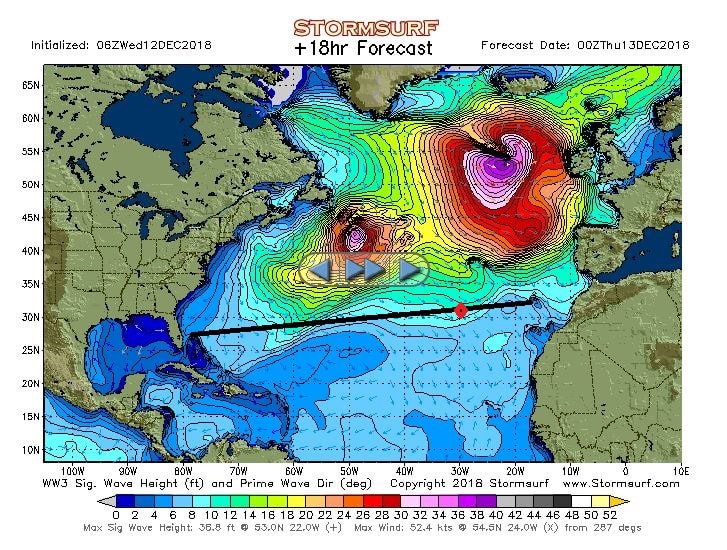
North Atlantic waves today. Being an Irish fisherman would not be my favorite job today.
Today I was asked and not for the first time, the Nieuw Statendam has 8 meters under water and more than 35 meters above water, why do we not fall over? Easy to ask, not so easy to answer because when you look at the ship, she is indeed very high.
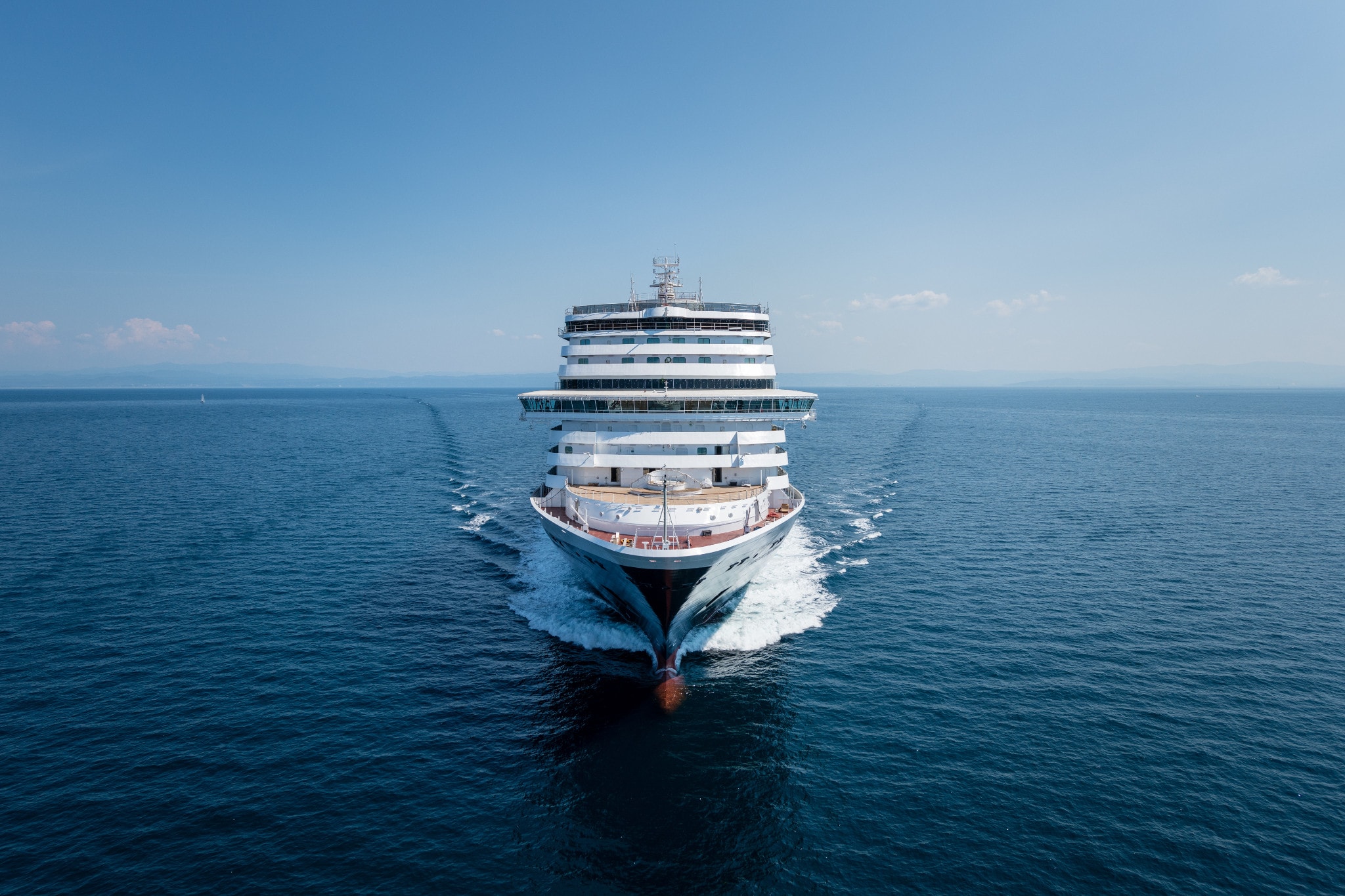
This is a shot from the Ships trial trips in August. As you can see perfect weather to test a ship out. (Photo courtesy Holland America / Fincantieri)
Going back to the old days, the old sailing ships with their high masts and all the wind force on the sails they did not fall over either. They had weight, either cargo or ballast deep in the hull that kept the ship upright. So in principle a cruise ship should not fall over either. Secondly there is the hull. It is watertight and it creates buoyancy and that keeps a ship floating. As long as there is more buoyancy, which pushes the ship up, than there is gravity which pushes the ship down, the ship will stay afloat. There is of course a moment when the two forces cancel each other out and it only needs a little push for gravity to win and there the ship goes. It sinks.
You can try this with a tin can in the bath tub. No water inside and the can will bob on the water and it floats. Start pouring water inside, this is called ballasting, and the tin can will settle. The right amount of water and there will be a perfect balance between sitting in the water (not bobbing up and down anymore) and not falling over either. That is what the stability officer does on board, figuring out the most perfect balance.
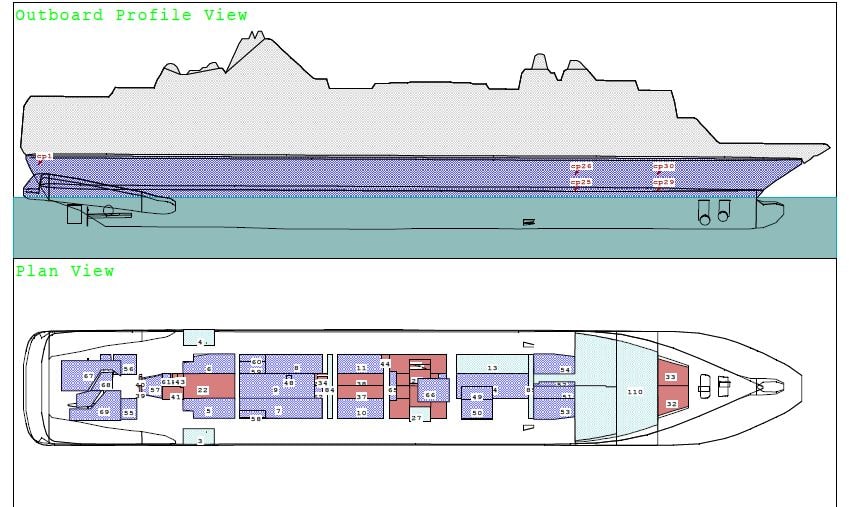
This is the tank layout of the S class ships. Blue is what is normally under water and purple is the part of the ship that is watertight to keep water from coming in. With our ships that is where the blue hull goes to white. In the double bottom we have Potable water, ballast water and fuel to keep the ship nice and steady in the sea.
If you keep filling the tin can with water then eventually the tin can will sink. Gravity has won from buoyancy. It is not only gravity that has influence, wind can do it as well, pushing against the superstructure and helping the gravity. Now cruise company’s (read the guests) want more and more balconies and they are not good for wind. With a flat wall it can already be bad but some of the wind is deflected up or down. With balconies the wind “bites” into those little boxes and is not deflected anymore. Very nasty.
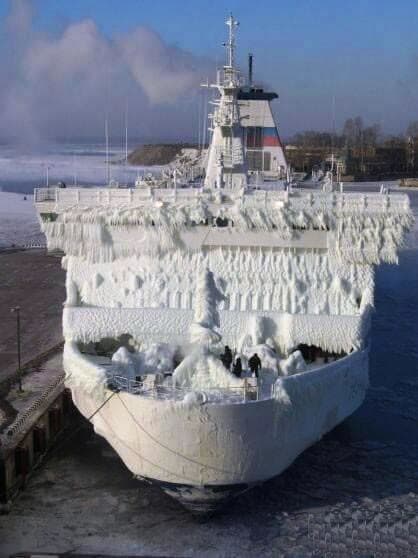
Apart from wind, ice is also not good for stability. It adds weight and if the design of the ship = stability does not takes this into account then things can go horribly wrong.
Thus we need a solution if a ship still needs to have more decks to have more balconies. You can add weight, in the low part of the ship, but then the draft increases. Nowadays we want to keep the ships draft around 8 to 8.5 meters otherwise there will be a lot of cruise ports (such as in the Caribbean) which will become a real problem. The other solution is to go sideways; make the ship wider. Then the weight gets distributed over a larger area, that improves buoyancy and the ship does not have to sink in that far. We increase the buoyancy. And that is what is done nowadays. (Try it again in the bath tub by comparing an oblong tin can, versus a round tin can of the same volume. You will need less water to make the oblong tin can stable.
As a result the Pinnacle Class is wider than the Vista Class because the Koningsdam and the Nieuw Statendam are higher. As a result the Vista Class fits in the old Panama Locks and the Pinnacle Class does not. A lot of the new cruise ships do not fit in those locks anymore. In Amsterdam they are building a new lock, the biggest one in the world, to ensure that larger cruise ships can still visit the City.
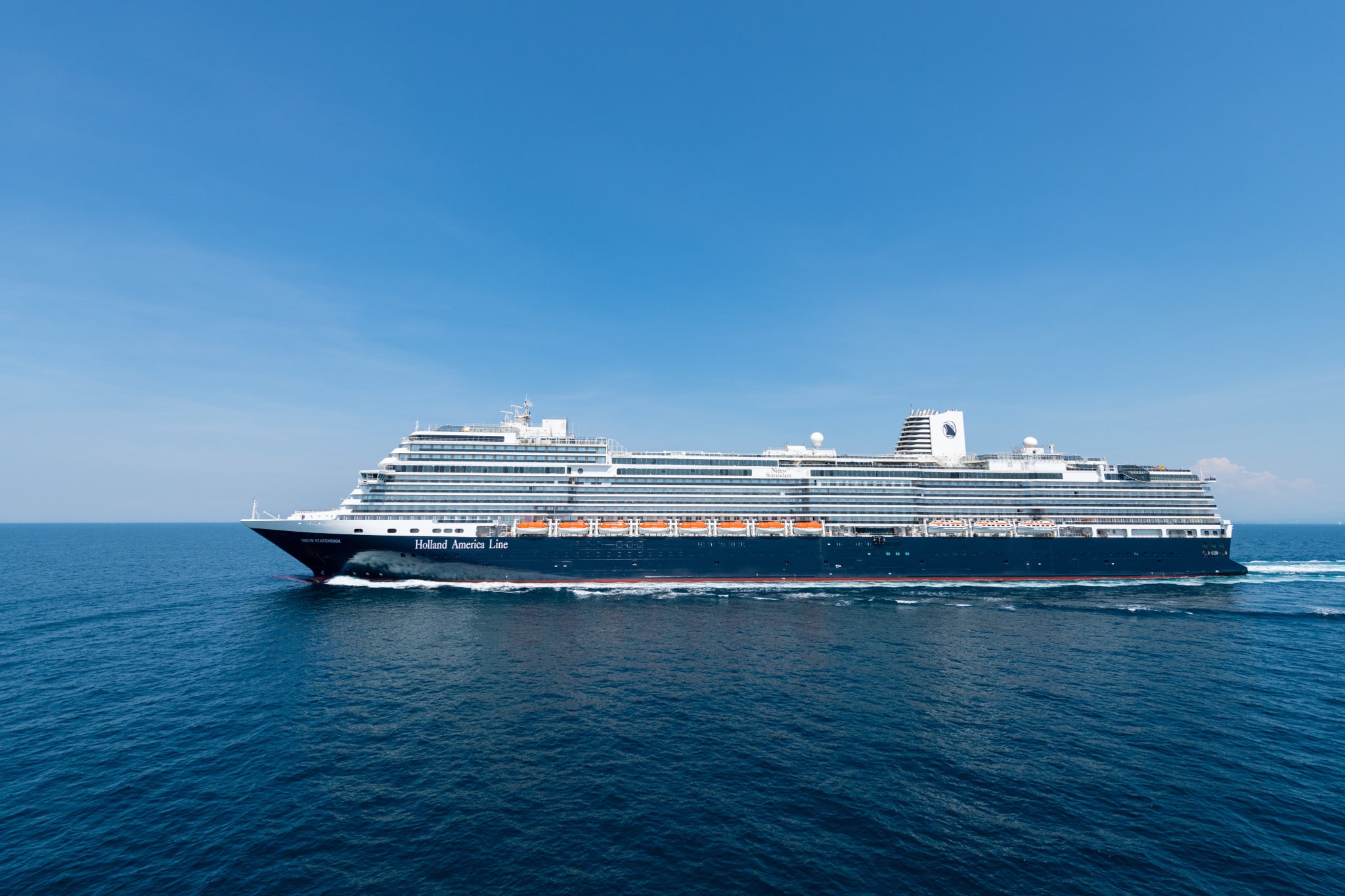
Another shot of the Nieuw Statendam on her trials last August. (Photo Courtesy: Holland America / Fincantieri)
How wide you go with the ship is basically a company decision. The wider you go, the more spare stability you have and the more steady the ship is. But you still have to go into port and harbor entrances are not always that wide either, and it also increases the resistance through the water and that costs more fuel. So a compromise is always needed. The hull form of the Pinnacle Class ships is very steady and a delight for any stability officer as there is very little need to play around with ballast to keep an optimum situation. The Nieuw Statendam is basically stable at all times.
Until so far my lecture for today……………………………………..
Tomorrow is another day at sea, with very little change. Things are looking very good.

December 12, 2018 at 1:45 pm
On board now; everything wonderful!
December 13, 2018 at 12:04 am
Hallo Kaptein; in March 2020, Nieuw Statendam’s older sister Koningsdam is scheduled to do a repositioning from Ft. Lauderdale to San Diego however, she’s doing it “the long way” around the tip of South America. Any theories why she’s not transitioning via the new locks of the Canal instead?
December 13, 2018 at 11:08 am
Hallo Copper,
although the KODM fits in the new locks, there are issues because of the lifeboats sticking out, which the PCA considers a challenge.
Until that is solved, the KODM has to go the long way.
Best regards
Capt. albert
December 13, 2018 at 7:25 pm
Thank you Sir! All the best!